Faculty

Leslie Caromile
Assistant Professor
Center for Vascular Biology
Caromile Lab Website
Research Interests: My lab investigates the role of prostate-specific membrane antigen (PSMA) in prostate cancer tumor growth and metastasis, and I currently have two federally funded projects:
Project 1: Recently, my lab has developed a novel multi-cell type, scaffold-free, 3D bioprinted prostatic tumor model that accurately represents the human PSMA (+) primary tumor vasculature and the primary tumor microenvironment. This model provides the laboratory with a unique system for interrogating novel PSMA small molecule inhibitors on multiple tumorigenic endpoints.
Project 2: We are investigating if germ-line SNPs within specific components of the PSMA signaling pathway might contribute to the increased risk of prostate cancer in African American men vs. that of men of European descent. Investigation into these molecular mechanisms not only has the potential to improve the outcomes of all men with lethal prostate cancer but also can reduce prostate cancer disparities by improving detection, morbidity, and mortality of lethal prostate cancer in African American and other at-risk populations through the identification of unique, tailored treatment and prevention strategies for each patient.

Kevin Claffey
Professor
Center for Vascular Biology
Claffey Lab Website
Research Interests: Breast cancer recurrence and subsequent metastasis is the cause of the majority of breast cancer related deaths. When and why breast cancer recurrence occurs also remains poorly understood. Examining the mechanisms of survival under long-term stress can provide information as to how to target these dormant cells.
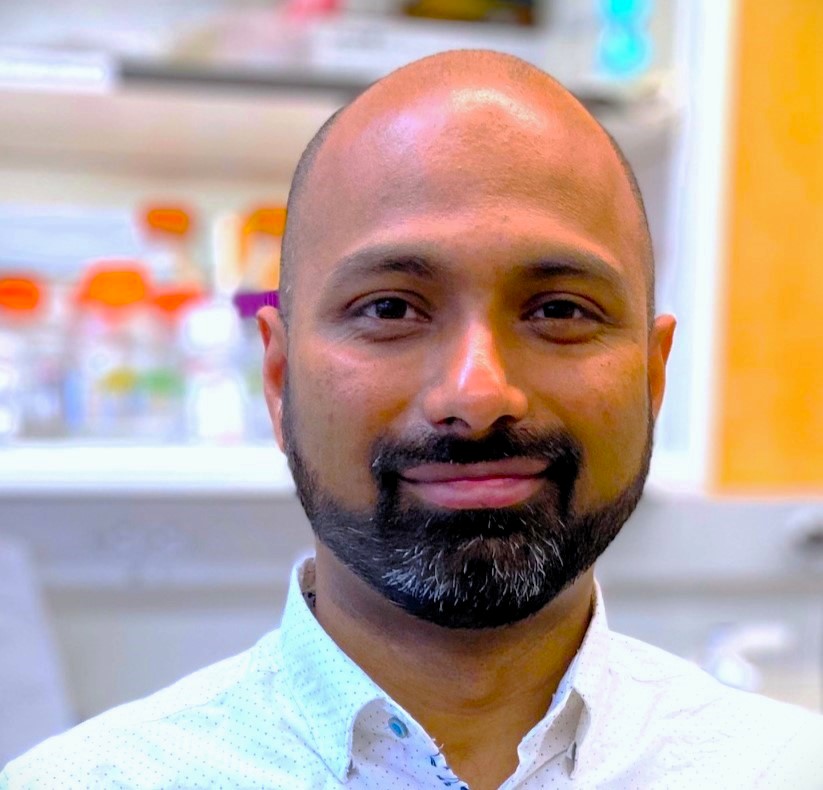
Abhijit (Abhi) Deb Roy
Assistant Professor
Center for Cell Analysis and Modeling
Deb Roy Lab Website
Research Interests: We are an experimental cell biology lab interested in both hypothesis-based and curiosity-driven questions, broadly within the realm of biomedical sciences. Our ongoing research projects are focused on investigating molecular signaling pathways and cytoskeletal dynamics involved in mechanobiology and cell migration. Directional cell migration plays critical roles during physiological processes such as development, angiogenesis and immune response, whereas dysregulation of cell migration is observed in pathologies such as cancer metastasis and atherosclerosis. We are interested in understanding how spatiotemporal regulation of signaling pathways modulates cytoskeletal dynamics to coordinate cell migration through diverse mechanical and biochemical environments. We employ live cell microscopy with biosensors and synthetic-biology based molecular actuators (optogenetic or chemical-inducible) to examine spatial and temporal relationships between molecular signaling pathways and cell behavior in a quantitative manner. We also collaborate with theoretical and computational biologists to develop predictive models bridging experimental observations to gain better understanding of complex biological systems.
Ongoing projects:
–Deciphering how post-translational modifications of microtubules, often called ‘the tubulin code’, affect their crosstalk with the actin cytoskeleton or with intermediate filaments.
–Investigating how spatial modulation of intracellular forces affect directional cell motility.

Kimberly Dodge-Kafka
Professor
Pat and Jim Calhoun Cardiology Center
Assistant Dean for Research Planning and Coordination
Dodge-Kafka Lab Website
Research Interests: My research focuses on defining the intracellular communication networks that promote specificity in signal transduction. In particular, we work on A-kinase-anchoring proteins (AKAPs) that target the camp-dependent protein kinase, as well as other signaling enzymes, into discrete signaling complexes in order to regulate the phosphorylation of target proteins. In particular, we are concentrating on AKAP complexes in the heart, and how they regulate cardiac physiology.
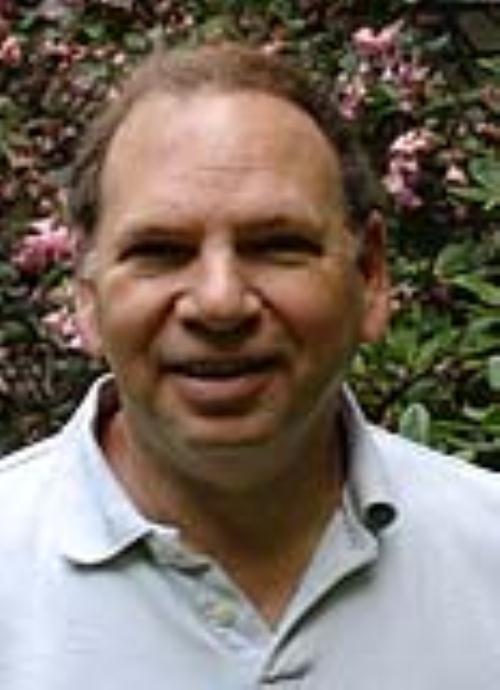
Paul Epstein
Associate Professor
Epstein Lab Website
Research Interests: Research in the Epstein laboratory centers on second messengers and signal transduction. Particular focus has been on cyclic nucleotide metabolism and protein phosphorylation, with emphasis on analysis of cyclic nucleotide phosphodiesterases (PDEs). It has become apparent, in recent years, that PDE is a superfamily of enzymes encoded by 21 different genes, grouped into 11 gene families, based on sequence similarity, mode of regulation and preference for cAMP or cGMP as substrate. With the existence of multiple transcription initiation sites, as well as alternatively spliced forms of many of these genes, more than 100 different forms of PDE have been identified and cloned to date, and many of these PDE forms are localized to different cells and different subcellular compartments as part of complexes or signalosomes composed of scaffolding proteins, cAMP effectors, and distinct PDEs, thus achieving targeted cAMP degradation and the creation of localized intracellular cAMP gradients and allowing the control of specific cellular functions by specific PDE isoforms during cellular signaling. Hence, by inhibiting or altering the expression of specific forms of PDE, cAMP levels in specific cell types can be altered, and fundamental physiological processes in one cell type can be changed, without affecting others. Thus, a main research goal in this laboratory is to examine the tissue distribution of different forms of PDE and regulation of their expression during development and in different pathophysiological states so that specific PDE isoforms can be targeted to treat a number of different diseases. The focus of our research has been to identify and inhibit specific PDE isoforms as novel treatment methods for leukemia, breast cancer and autoimmune and inflammatory illnesses.
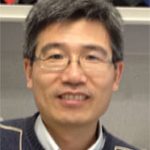
Guo-Hua Fong
Professor
Center for Vascular Biology
Fong Lab Website
Research Interests: Angiogenesis, or growth of blood vessels, is often suboptimal in many injured tissues such as ischemic tissues following heart attack or diabetic wounds. The healing and regeneration of such tissues critically depend on proper angiogenesis. On the other hand, uncontrolled neovascularization underlies many diseases such as tumor growth, diabetic retinopathy (DR), and age-related macular degeneration (AMD). In addition, capillary destruction is a significant pathological contributor to such diseases as bronchopulmonary dysplasia (BPD) and retinopathy of the prematurity (ROP). At the current state of the knowledge, the molecular mechanisms controlling angiogenesis and vascular integrity are only partially understood, which handicaps efforts to develop effective therapies. In our laboratory, we use both developmental and disease models to understand how these processes are controlled, and explore potential therapeutic approaches.
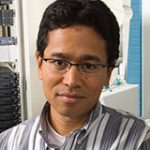
David Han
Associate Professor
Center for Vascular Biology
Han Lab Website
Research Interests: The overall goal of the Han Laboratory is to utilize newly developed proteomic technologies to uncover cellular signaling networks and pathways that govern mechanisms of programmed cell death/apoptosis. Toward the overall goal, we have made significant level of commitment to improve currently available technologies and apply proteomic technologies to uncover novel biological insights.
- Apoptotic Signaling Networks in Vascular Inflammation and Atherosclerosis
- Mechanisms of Apoptotic Cell Engulfment
- Modeling Genomics and Proteomics Datasets by Developing Novel Bioinformatics Approaches
- Implementation of Proteomics and Mass Spectrometry Technologies for Protein Identification and Quantification
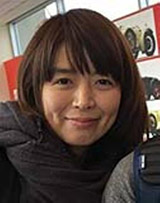
Mayu Inaba
Associate Professor
Inaba Website
Inaba Lab Website
Research Interests: Asymmetric stem cell division is a mechanism that balances stem cell self-renewal and differentiation through the production of one stem cell and one differentiating cell. It is a simple way of maintaining the stem cell population without increasing it and is thus thought to be a vital mechanism for tissue homeostasis and tumor suppression. My research goal is to elucidate the molecular mechanism as to how two daughter cells of different fates are made after only one cell division. My lab primarily uses Drosophila gonads, in which we can monitor asymmetric division in vivo. Owning to the simple anatomy and abundant imaging tools, this system allows us to discover previously unrecognized regulatory mechanisms Our research findings should lead to the development of new therapeutic approaches for cancers and degenerative diseases.
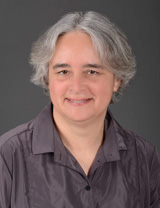
Laurinda Jaffe
Board of Trustees Distinguished Professor and Chair
Jaffe Lab Website
Research Interests: Research in the Jaffe lab concerns the physiological mechanisms that regulate the oocyte cell cycle and fertilization. Currently, our studies are focused on regulation of meiosis in mammalian ovarian follicles by cyclic nucleotides.
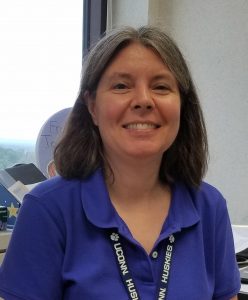
Lisa Mehlmann
Associate Professor
Mehlmann Lab Website
Research Interests: Our lab is interested in elucidating cytoplasmic changes that occur in the mammalian oocyte that are important for the egg to become developmentally competent, as well as the mechanisms that cause these cytoplasmic changes to occur. A complete understanding of these events will contribute to improving methods for maturing oocytes in vitro.
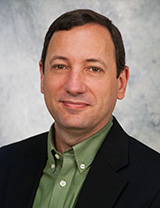
Pedro Mendes
Professor and Director
Center for Cell Analysis and Modeling
Mendes Group Website
Research Interests: My research is in the area of computational systems biology, which aims to better understand biological systems through the use of computer models. My active areas of research include the development of modeling and simulation software as the author of the popular simulator Gepasi and leader of the COPASI simulator (with U. Kummer) and have been actively involved in the development of SBML, the systems biology markup language, and the MIRIAM proposal for model annotation. My group also constructs biochemical models, currently, this involves models of iron metabolism, eukaryotic translation, and microbial central metabolism. Through this work, I have pioneered the application of numerical global optimization in biochemical kinetic modeling and I am interested in using formal systems identification techniques in systems biology, particularly for reverse engineering models from data. My research requires a broad interdisciplinary approach and I work with people from most areas of science, either in my own research group or as collaborators.
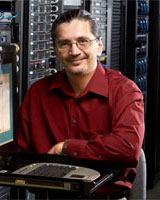
Ion Moraru
Professor
Center for Cell Analysis and Modeling
Research Interests: My general research relates to the theoretical understanding of cellular processes, and developing tools for mathematical modeling in cell biology. Current work focuses on interfacing pathway/logic models and –omics data with kinetic quantitative models and dynamic simulations, both on new technology developments and the application to complex modeling of signaling pathways in normal and malignant cells. I am also the current lead developer of the Virtual Cell software platform for mathematical modeling and direct development of both the user interface and computational infrastructure. In addition, my interest in model reproducibility has led to a powerful new web platform that provides a central portal for simulating a broad range of models of biological systems. I have been involved in community standards for a long time, contributing to the development of both Systems Biology Markup Language (SBML) and Simulation Experiment Description Markup Language (SED-ML).
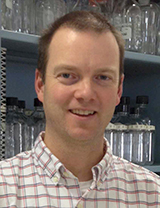
Patrick Murphy
Associate Professor, Interim Director
Center for Vascular Biology
Murphy Lab Website
Research Interests: Our research focuses on endothelial cells lining the vasculature, aiming to better understand the critical role of these cells in mediating inflammatory and immune responses. Our work has revealed post-transcriptional regulation by alternative splicing in the response to inmate immune cell recruitment.
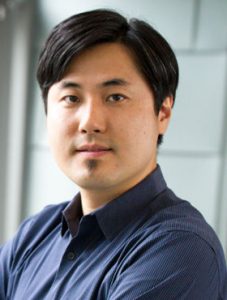
Hideyuki Oguro
Assistant Professor
Oguro Website
Oguro Lab Website
Research Interests: Blood-forming hematopoietic stem cells (HSCs) maintain the entire blood/immune system throughout life and are the functional units of bone marrow transplantation. The Oguro laboratory investigates the mechanisms that regulate HSC development, self-renewal, mobilization, and malignant transformation using mouse models, patient samples, and human induced pluripotent stem cells (hiPSCs). Our laboratory currently focuses on: 1) understanding how HSCs proliferate and mobilize in response to acute hematopoietic demands; 2) understanding how normal mechanisms that activate HSCs are exploited in hematologic malignancies; 3) understanding the HSC developmental process to generate long-term engraftable HSCs from hiPSCs. Our findings could lead to novel therapies for diseases caused by insufficient hematopoiesis or hematologic malignancies.

Rebecca Page
Professor
Page Lab Website
Research Interests: How we sense and react to our environment is communicated in the cell by vast networks of highly dynamic, interacting proteins. These interactions are regulated in both space and time, and it is this tight regulation that allows signals from outside of the cell to be rapidly and precisely transmitted to the nucleus leading to the appropriate, and healthy, cellular response. We integrate structural biology, cell biology, genetics and biochemistry in order to understand how these signals in both prokaryotes and eukaryotes are communicated in the cell at atomic resolution.

Annabelle Rodriguez-Oquendo
Professor
Center for Vascular Biology
Rodriguez-Oquendo Lab Website
Research Interests: High density lipoprotein cholesterol (HDL-C) levels are thought to protect against cardiovascular disease. This may or may not be true in certain populations. The Rodriguez-Oquendo lab is studying the genetic link between healthy HDL cholesterol, heart disease, and infertility in women. This work suggests that variations within the SCARB1 (scavenger receptor class B type I) gene, connected to increased HDL levels, are associated with heart disease risk as well as hormonal and fertility problems in women. The goal of the research discoveries is the development of methods to diagnose and, ultimately, treat heart disease and improve a woman’s ability to conceive.
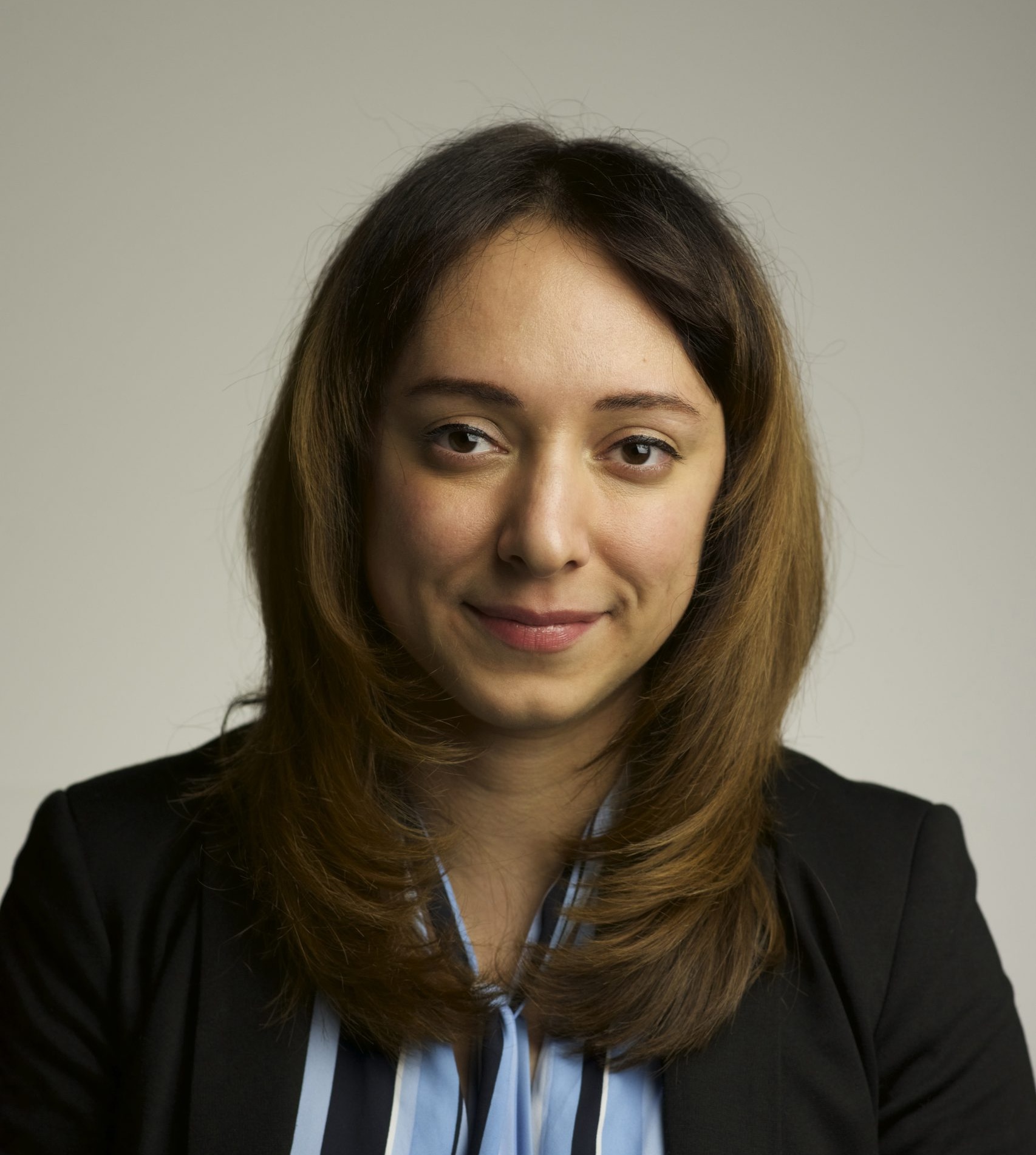
Sarvenaz Sarabipour
Assistant Professor
Center for Cell Analysis and Modeling
Sarabipour Lab Website
Research Interests. Our group is interested in understanding the mechanisms of signal transduction in cells and tissue. To do so, we combine techniques in multiple quantitative biological disciplines including biophysics, molecular biology, biochemistry and computational systems biology from single molecule measurements to multi-scale models of physiology and pathophysiology. We build multi-scale models of cells from their molecular interactions to their function in tissue to identify signal transduction mechanisms that contribute to cellular proliferation and migration in vascular and neuronal cells. The knowledge we gain is key in finding ways to modulate these critical signaling pathways for therapeutic potential for disease.

Linda Shapiro
Professor, Center for Vascular Biology
Shapiro Lab Website
Research Interests: Research in the Shapiro Laboratory is focused on understanding the physiological and pathological regulation and function of two M1 family cell surface peptidases CD13/aminopeptidase N and PSMA/glutamate carboxy-peptidase II. This interest is the result of the striking upregulation of numerous cell surface peptidases on endothelial cells in response to both angiogenic land inflammatory signals, leading to the hypothesis that these may functionally cooperate in enzymatic cascades to regulate angiogenesis, inflammation and endothelial cell function. While the angiogenic significance of proteases that cleave large proteins (such as the matrix metalloproteases) is well documented, increasing evidence supports a role for peptidases (metAP2, CD13, APA, PSMA) as angiogenic regulators as well. The fact that these enzymes metabolize small peptide substrates suggests that small molecule regulators of angiogenesis exist which have yet to be identified and whose mechanisms are unknown. Indeed, we have shown that CD13 and PSMA are potent regulators of angiogenesis individually and our investigation of their regulatory mechanisms and their possible interaction is a current focus of the laboratory. However, our investigations have identified a variety of additional functions for these multifunctional molecules, leading our studies into the areas of molecular biology, immunology, cell biology, nephrology, transplant biology, stem cell biology, biomarkers and oncology in addition to angiogenesis using mouse models of myocardial infarction, peripheral artery disease, stroke, peritonitis, diabetic nephropathy, ureteropelvic junction obstruction and prostate cancer. Our strong relationship with clinician-scientists from the Connecticut Children’s Medical Center Departments of Surgery, Urology and Nephrology has fostered a high degree of translational research by providing clinical insights and remarkable access to patient samples, allowing us to identify, investigate and potentially treat truly clinically relevant questions.
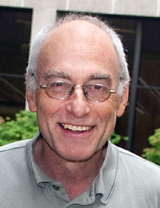
Henry Smilowitz
Associate Professor
Smilowitz Lab Website
Research Interests:
- Use of heavy-atom nanoparticles for tumor imaging, vascular imaging and as a radiation enhancer for tumor therapy.
- Use of iron and gold nanoparticles for tumor hyperthermia
- Development of novel brain tumor therapies for experimental, advanced, imminently lethal intracerebral malignant gliomas and melanomas in rats and mice using a combination of radiation therapy and immunotherapy.
- Tumor dormancy
- Novel biomarkers in human breast cancer.
- Use of heavy atom nanoparticles to study vulnerable plaque in mouse models of atherosclerosis
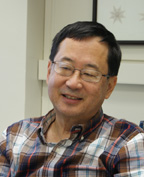
Mark Terasaki
Associate Professor
Terasaki Lab Website
Research Interests: I have a long interest in the 3D organization of the endoplasmic reticulum, and more recently have started to work on 3D organization of cells and related structures in tissues. My lab uses microtomes to physically cut serial sections of varying thicknesses then images the sections by electron microscopy or fluorescence microscopy. Recent morphology projects include the tubular ER network in axons, the capillary network of the glomerulus, filopodial distribution in the mouse ovarian follicle, and the first myelin paranode at the axon initial segment of spinal motor neurons.

Paola Vera-Licona
Assistant Professor
Center for Quantitative Medicine and Center for Cell Analysis and Modeling
Vera-Licona Lab Website
Research Interests: Our research is at the intersection of computational systems medicine and systems biology, mathematical biology, and bioinformatics. We work on the design, software development, and application of mathematical algorithms for the modeling, simulation, and control of biological systems. In molecular biology, the systems of our interest include gene regulatory networks and intracellular signaling networks where we aim to understand and control the cells’ intricate regulatory programs. We are focused on Cancer research (cancer reversion mechanisms and reversion of chemotherapy resistance) in breast cancer and leukemia.

Lixia Yue
Professor
Pat and Jim Calhoun Cardiology Center
Yue Cell Biology Website
Research Interests: Calcium is the most common signal transduction element in virtually all cells ranging from bacteria to neurons. Recent studies have demonstrated the importance of transient receptor potential (TRP) channels in mediating calcium signals. The mammalian TRP channel superfamily consists of a diverse group of calcium permeable nonselective cation channels that may play a role in pain transduction, thermo-sensation, mechanotransduction, tumor suppression, vasodilatation, and neurodegenerative disorder. Twenty-eight mammalian TRP channel genes have been cloned since the first TRP channel protein was identified in Drosophila, yet their physiological functions are to be revealed.
In Residence Faculty
- Iman M. Al-Naggar, Assistant Professor, Center on Aging
- Jeremy Egbert, Assistant Professor
- Miki Furusho, Assistant Professor
- Mallika Ghosh, Assistant Professor, Center for Vascular Biology
- Yvonne Grimm-Jorgensen, Assistant Professor
- Yida Jiang, Instructor
- Xin Li, Instructor, Cardiology
- Katie Lowther, Assistant Professor and Assistant Director, Center for Mouse Genome Modification
- Rachael Norris, Assistant Professor and Assistant director, Central Electron Microscopy Facility
- Sathya Srinivasan, Assistant Professor
- James Watras, Associate Professor
- Siu-Pok Yee, Associate Professor and Director, Center for Mouse Genome Modification
Emeritus Faculty
- Dominick Cinti, Professor
- Alan Fein, Professor, deceased May 1, 2023
- Maurice Feinstein, Professor
- Joseph A. Grasso, Professor
- Robert Jungas, Professor
- Leslie Loew, Professor
- Achilles Pappano, Professor, deceased December 31, 2024
- John Peluso, Professor
- Vladimir Rodionov, Professor
- John Schenkman, Professor
- Dudley Watkins, Professor
- Bruce White, Professor
Joint, Adjunct and Affiliated Appointments
- Susan Preston Berlin, UConn Waterbury
- Elise Courtois, Jackson Laboratory and Ob/Gyn
- Caroline Dealy, Department of Reconstructive Sciences
- Ahmed Elmokadem, Metrum Research Group, Tariffville, CT
- Sherli Koshy-Chenthittayil, Touro University, Las Vegas, NV
- Kshitiz, Biomedical Engineering
- Richard Ratzan, Associate Clinical Professor
- Matthew Riggs, Metrum Research Goup, Tariffville, CT
- Paul Robson, Jackson Laboratory
- Andrea Shields, Department of Obstetrics and Gynecology
- Leia Shuhaibar, Ferring Pharmaceuticals
- Yanlin Wang, Division of Nephrology
Research Staff
Deborah Kaback
Room: EB010
Phone: 860-679-2296
Email: kaback@uchc.edu
Amy Kimble
Room: E5029
Phone: 860-679-2680
Email: kimble@uchc.edu
Sharif Ridwan
Room: E6038
Phone: 860-679-8582
Email: ridwan@uchc.edu
Tracy Uliasz
Room: E6029
Phone: 860-679-3476
Email: tuliasz@uchc.edu
Office Staff (E6036)
Tracy Hintz
Business Services Manager
Department of Cell Biology
Phone: 860-679-3672
Email: thintz@uchc.edu
Deb Allaire
Administrative Program Coordinator
Department of Cell Biology
Phone: 860-679-1034
Email: deballaire@uchc.edu
Anna Sagan
Administrative Program Coordinator
Department of Cell Biology
Phone: 860-679-3848
Email: sagan@uchc.edu
Barbara Carrah
Administrative Program Assistant 2
Department of Cell Biology
Phone: 860-679-3619
Email: carrah@uchc.edu